This is a post that does not have much to do with running. In fact, this post has almost nothing to do with running… Unless maybe you are a runner who works from home. Since more and more people are working from home these days, I would like to address the issue of ergonomics.
Merriam-Webster defines ergonomics as, “an applied science concerned with designing and arranging things people use so that the people and things interact most efficiently and safely,” or “the design characteristics of an object resulting especially from the application of the science of ergonomics.” This is the study of getting the work, workstation and/or equipment to fit the employee.
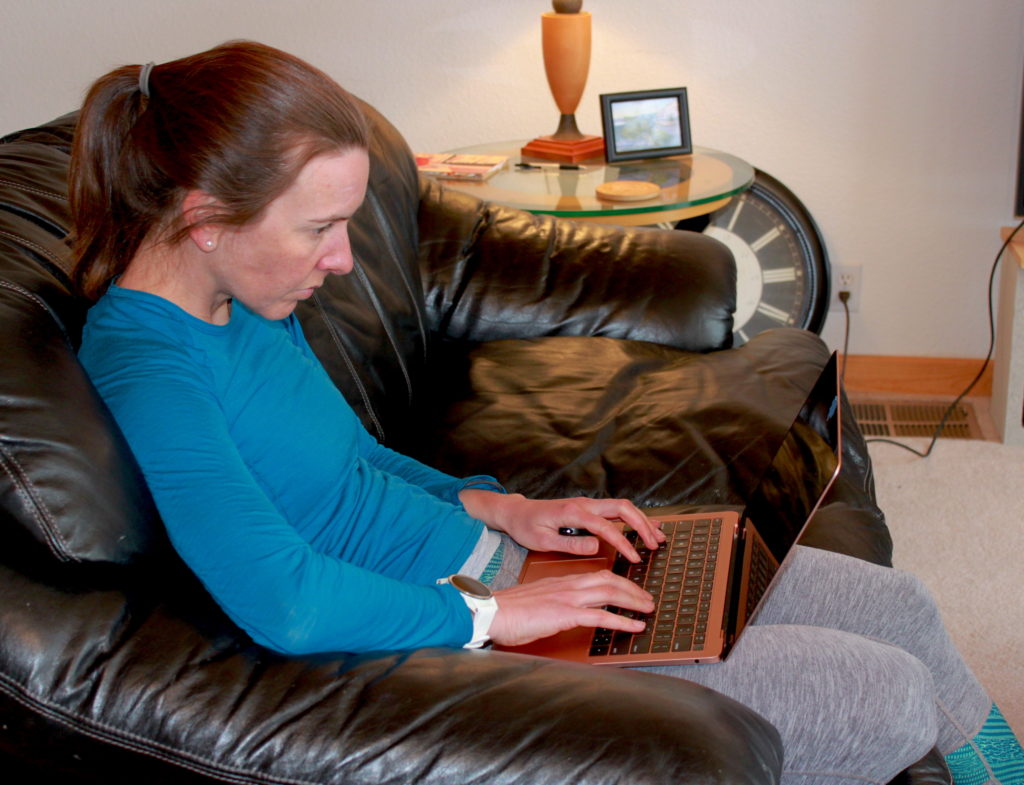
Part of my work as a physical therapist is performing ergonomic evaluations. I go to a client’s workplace and assess where and how they work. From there I can give them advice on how to work without putting undue stress of their bodies. Sometimes this means rearranging their workstation by adjusting their chair, desk, computer monitor and other items that they use at work. Other times it means advising them on specialized equipment that they may need to purchase such as a particular type of keyboard or computer mouse. There are also times where there isn’t a workstation that necessarily needs to be adjusted, but the client needs to be coached on how to properly position themselves when doing their work. This idea of setting oneself up properly to do a task so that they put minimal strain on their bodies is called body mechanics.
Ergonomics is a funny area to work in. While there are some rules about what an ideal workstation is, a lot of what is best for a particular person comes down to comfort. For example, your co-worker’s joystick mouse may be uncomfortable for you. In fact, if you were to use it for several weeks you may end up with a wrist strain. That could be funny to think about when you look over and see your co-worker comfortably using it to navigate a spreadsheet. Also, there is no one perfect setup for anyone. Often times I advise people to work within a certain range. Where they fall within that range depends on comfort.
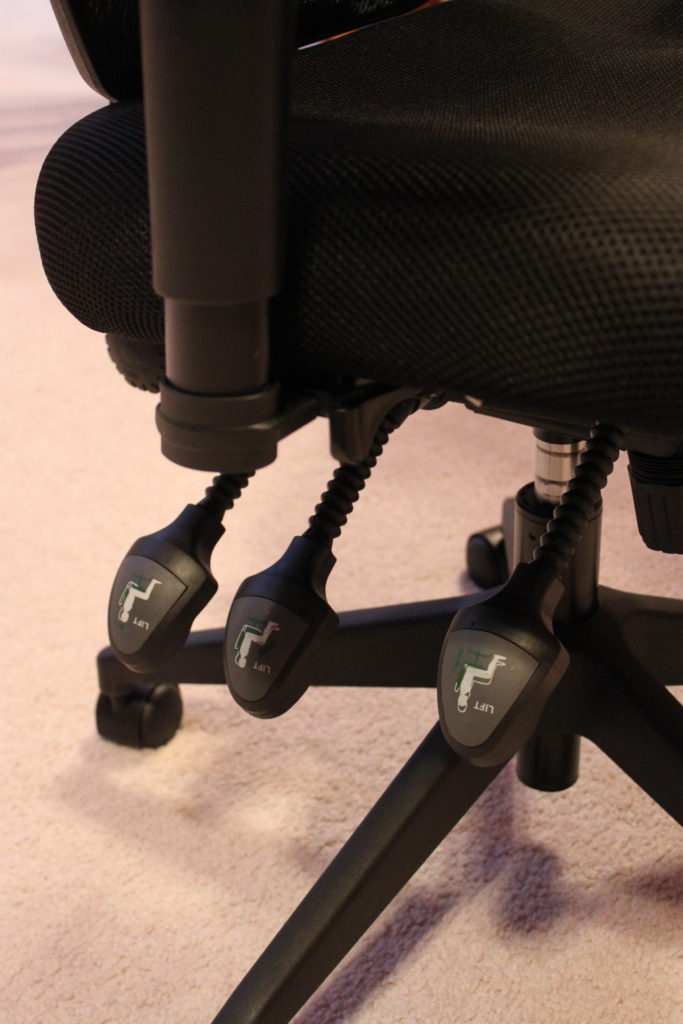
Additionally, office equipment can get really expensive – especially if it is labeled “ergonomic”. However, an ergonomic setup doesn’t always have to be the priciest option. I’m here to give you some tips on how to set yourself up at home without too much effort or a hefty price tag. You may already have a desk or an office chair at home. However, if you are using a laptop at your desk you may not be set up very well. Also, have you ever fiddled with those little levers on the side of your chair to adjust it? Let’s go over some basics of how to set up your home workstation so that you are not putting undue stress on your body that could lead to injury.
Chairs
First off, if you are going to spend money on any piece of office equipment, I recommend you spend it on a chair. If you are set up well in your chair, then you are already avoiding a lot of aches and pains.
When sitting in a chair, your feet should be flat on the floor. Your hips need to be all the way back in the seat with your back against the backrest. There should also be about 2-3 fingers width of space between the front if your seat pan and the back of your legs. This is so that the chair does not cut off the circulation in your legs.
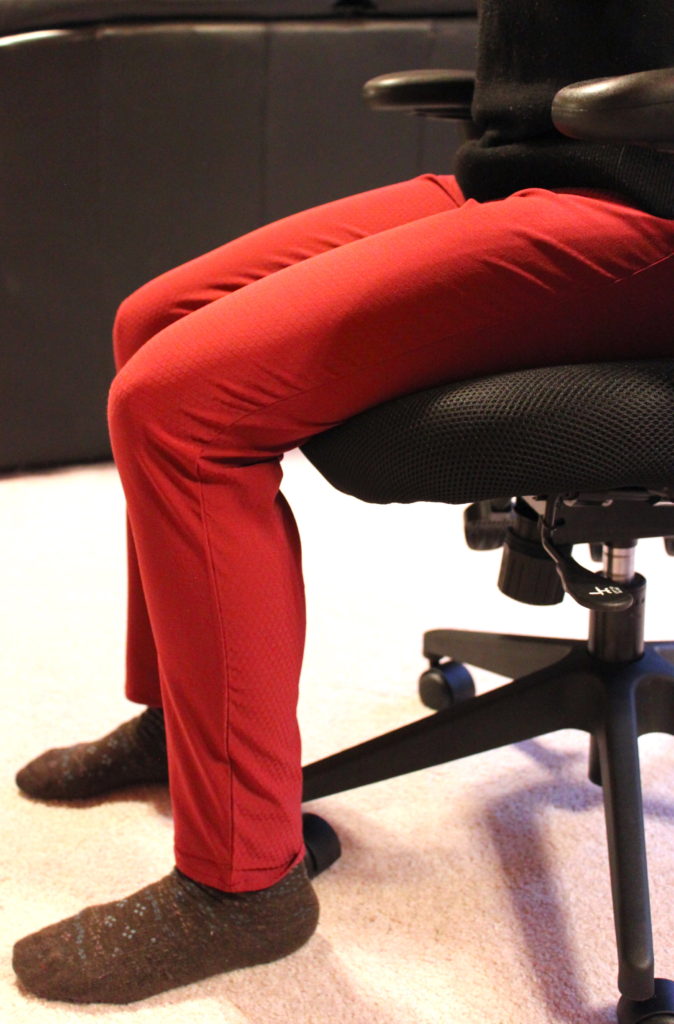
In regards to the height of your chair, you want to have your hips bent at 110-120 degrees. This means that your knees are positioned slightly lower than your hips. When you are sitting with this amount of bend at your hips, you are less likely to round at your back.
If your feet do not reach the floor, you either need to find a lower chair or use a footrest. This footrest does not need to be anything too fancy. Often times a few books, a shoebox, or a ream of paper will do. If you find that sitting all the way back in your seat causes the front of the seat pan to come into contact with the back of your legs, you need to find a smaller chair. If that is not possible, you can try to put a pillow against the back of your chair to help fill in the space. The solution with a pillow is not ideal, but may be more comfortable than sitting in a seat that is too big.
When considering what type of chair to sit in, you may also want to think about cushioning. Sure your kitchen chair is great for the 20-40 minutes that you are sitting in it while eating. However, you might get pretty uncomfortable after sitting there for an hour.
Keyboards
When using a keyboard, you want your wrists to either be level with your elbows or slightly lower than your elbows. This means that your elbows are either bent at 90 degrees, or a little more. Typically, 90-110 degrees is ideal. This means that your wrists are either in line with your elbows, or slightly lower than your elbows. Where you are within this range is a matter of comfort.
When using the keyboard, you want your wrists to be in either a neutral position (straight) or slightly flexed. Where you are within this range is a matter of comfort. What you definitely do not want to have is your wrists extended so that the front of your wrists are pushing down into your desk or the edge of the keyboard.
How your shoulders are positioned is also important. Ideally your shoulders should be relaxed by your sides and not elevated, or hunched forward.
If you have wider shoulders, spending hours on a small laptop keyboard may have you hunching forward at your shoulders. If this is the case, you may want to look into using an external keyboard, as then tend to be a little wider. Working at a desk or surface (such as the kitchen counter) that is too high can also cause you to hunch your shoulders. In this case, you may need to find a lower surface to work on. Conversely, you could also raise your chair so that you have that 90-110 degree band at your elbows. Remember to put something under your feet so that they are not dangling.
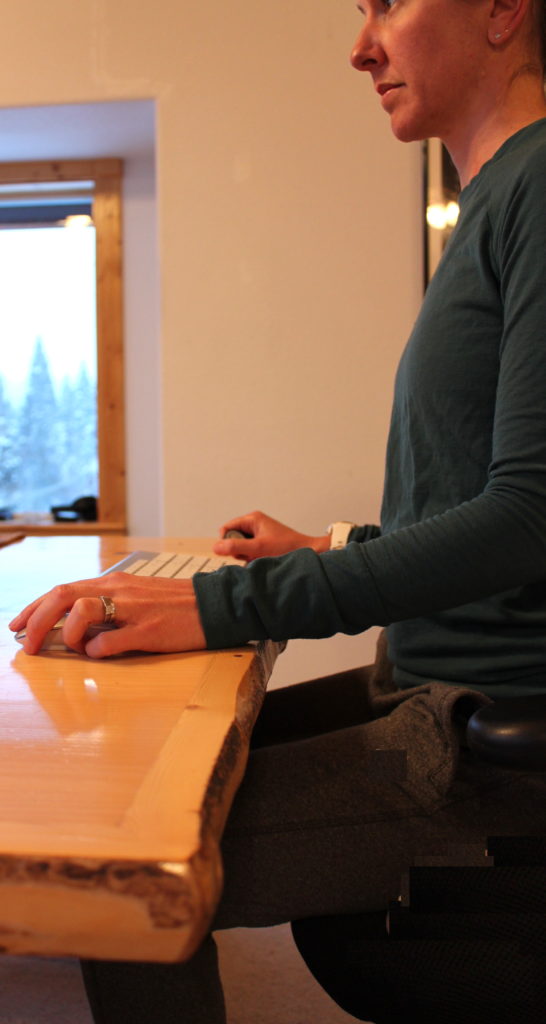
Mouse
The same idea of elbows bent at 90-110 degrees is the same for the mouse. Again, you do not want your wrist to be extended so that it is pushing down into your desk. Keeping your wrist in either neutral, or slightly elevated is best. If you typically use a mouse at work, and find that your laptop trackpad at home is killing you, it may also be time to invest in an external mouse.
Monitor
When looking straight ahead, you want your eye gaze to fall on the top third of the computer monitor. Often times – actually probably never will you be able to achieve this while using a laptop without an external keyboard or external monitor. If you find that you are working long hours at home with a laptop, investing in some external equipment may be a good idea. Talk to your work and see if they will either purchase these items for you reimburse you if you buy them yourself. If work won’t help you out with getting some better equipment, you could also write off the things that you purchase on your own as a work expense when doing your taxes (so save your receipts).
Ergo Hacks
You may not have the same budget to throw at a new desk as your employer. You may also not know for how much longer you will be working from home. Since office equipment can add up, here are a few hacks that will have you set up well without breaking the bank.
Laptop with an external monitor:
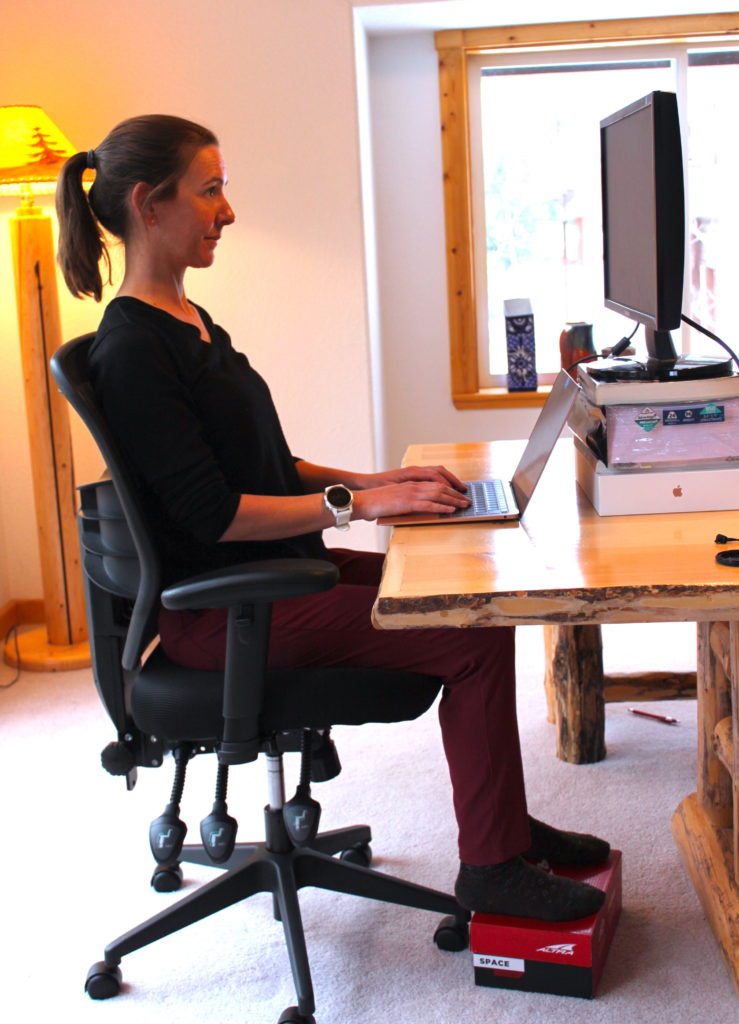
Use books, boxes, paper to raise the monitor. As stated before, when looking straight ahead, your eye gaze should fall on the top third of the computer screen.
Laptop on a box with an external mouse and keyboard:
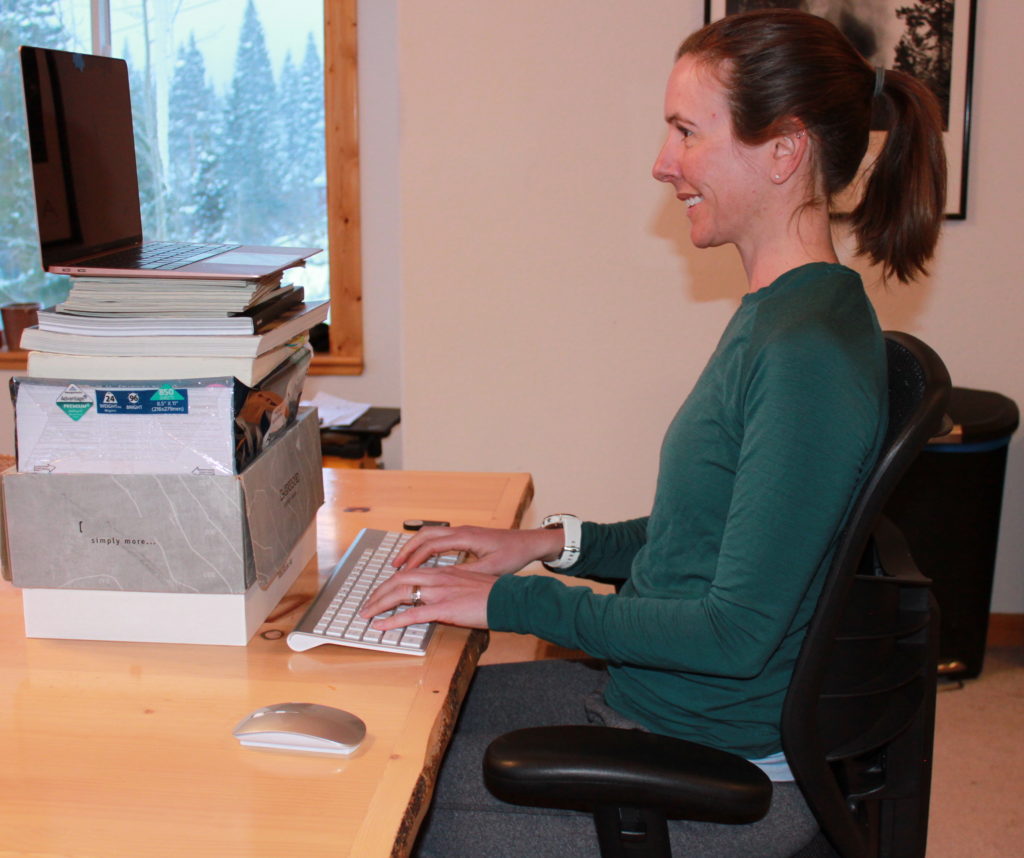
Use the laptop monitor as your working monitor. Put the laptop up on the books, and boxes. Then make sure that the external keyboard and mouse (if using) are at a good level for your wrists and forearms.
No standing desk? No problem!
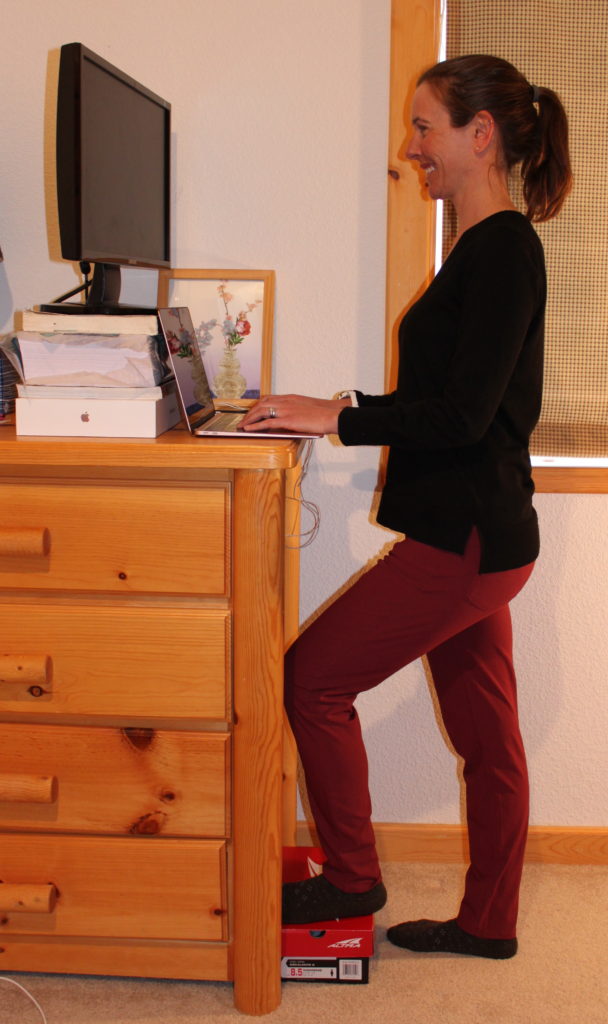
Furniture or a kitchen counter can become a standing workstation. Again, you will have to either put your laptop, or your monitor on some books and boxes so that it is at an appropriate height. If you are tall, you may also want to put something under your laptop (if you are using it as a keyboard), or your external keyboard. You might get uncomfortable, if your hands are too low. If you are shorter, you could also try standing on something (just make sure that it is sturdy enough to support you). Having something such as a step or a box to put your foot on can also be handy. Standing with one foot on a slightly elevated surface can help to keep you from slouching. Change which foot is on the elevated surface as you need.
Keep moving!
Lastly, I have one more piece of information. In fact, I probably should have put it at the beginning of this thing. The number one way to keep yourself free of aches and pains while working is to take breaks. We have (look up the number) of joints in our bodies. WE WERE MEANT TO MOVE! No matter how good your workstation is and how well you are set up, if you don’t move around and change positions every so often, you will have some aches and pain. Since you are working from home, that means that your boss isn’t babysitting you and your co-workers won’t think that you’re crazy if you stand up and stretch.
Looking back through this blog, you can find some good strengthening and mobility exercises for the hips and legs. Here are a few good ones for your top half! Show your neck, shoulders and arms some love.
Chin tucks
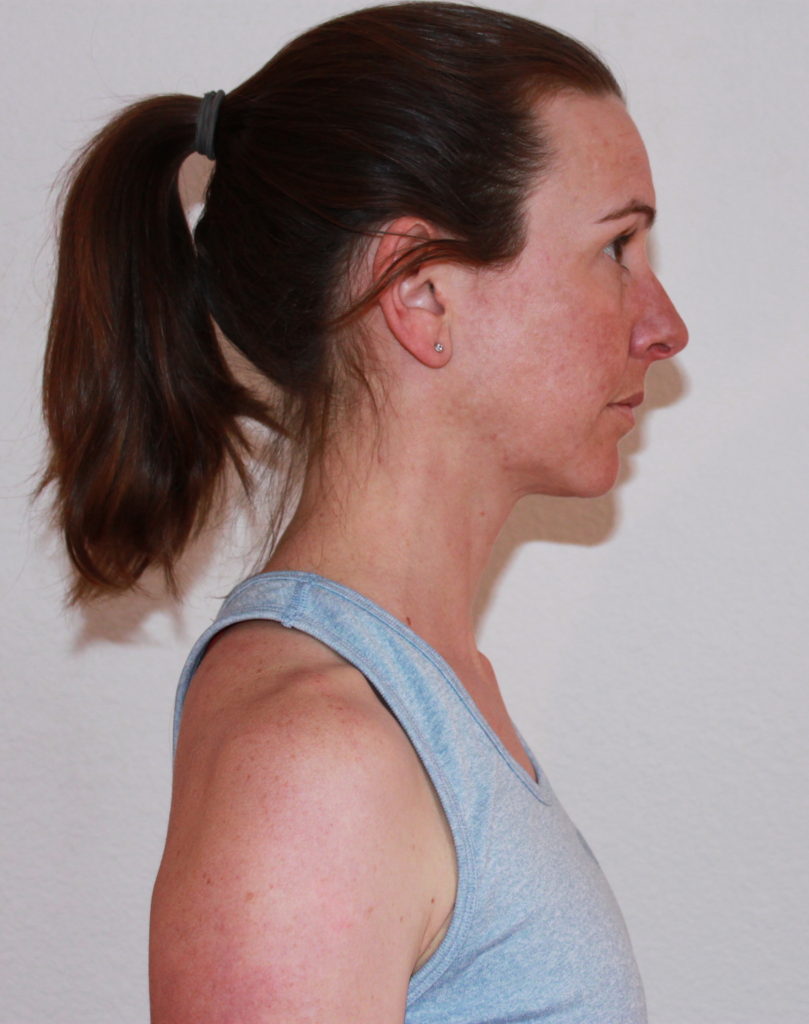
Start by looking straight ahead. Keep your shoulders back. 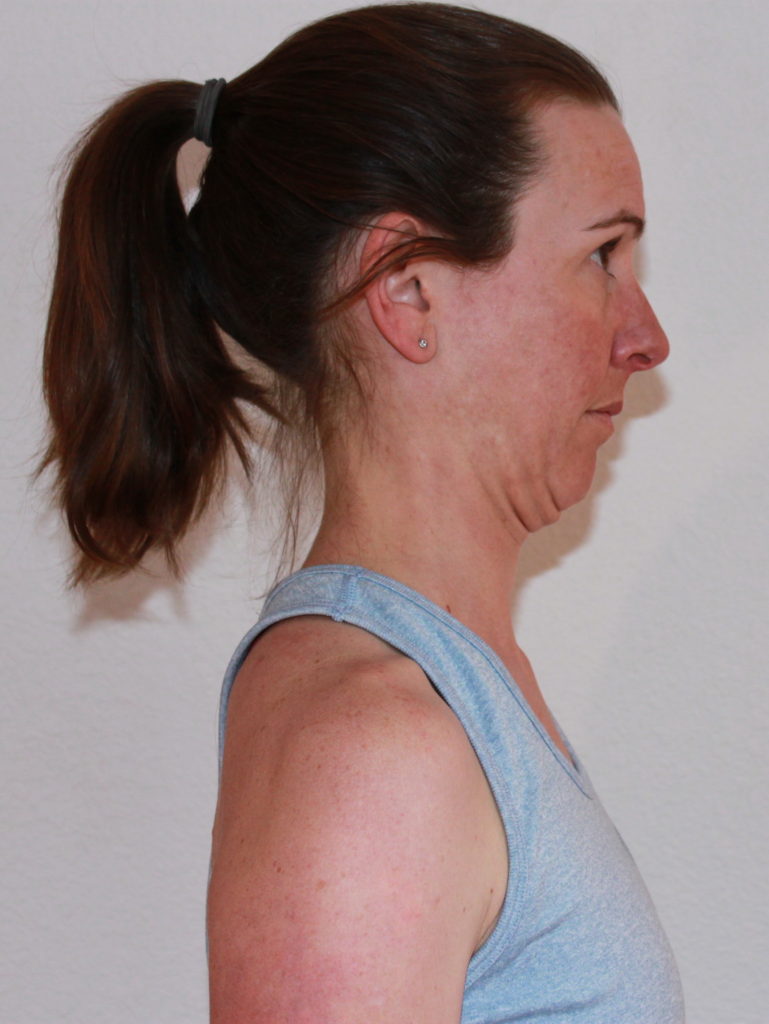
Now, gently draw your chin back as though you are giving yourself a double chin. Keep looking forward.
Shoulder blade squeeze
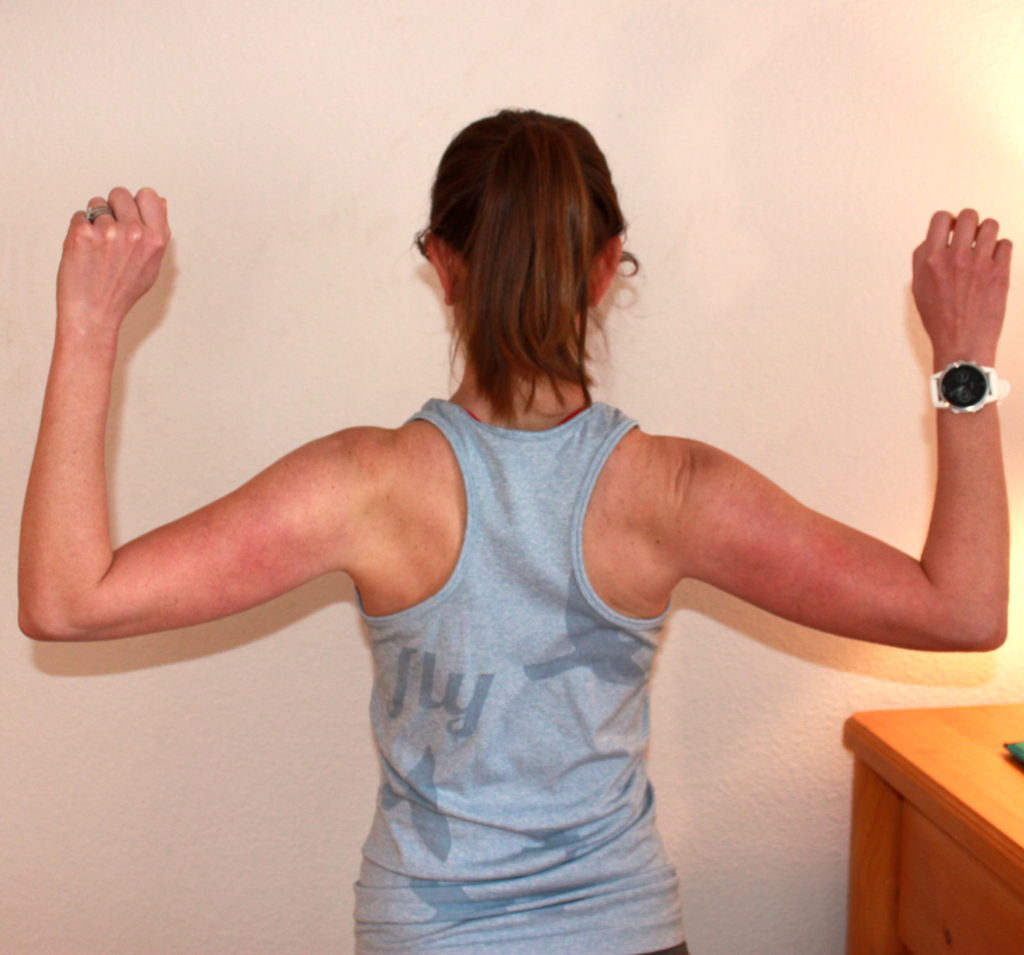
Wrist and forearm stretches
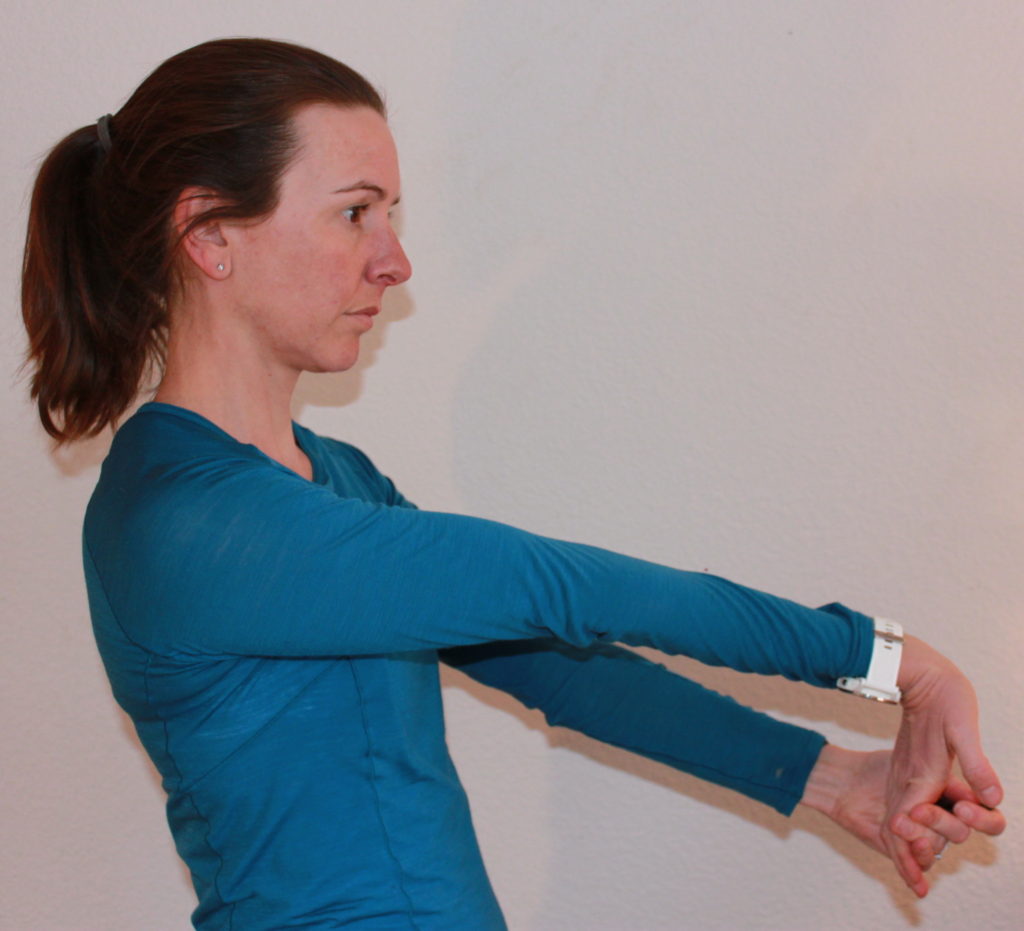
1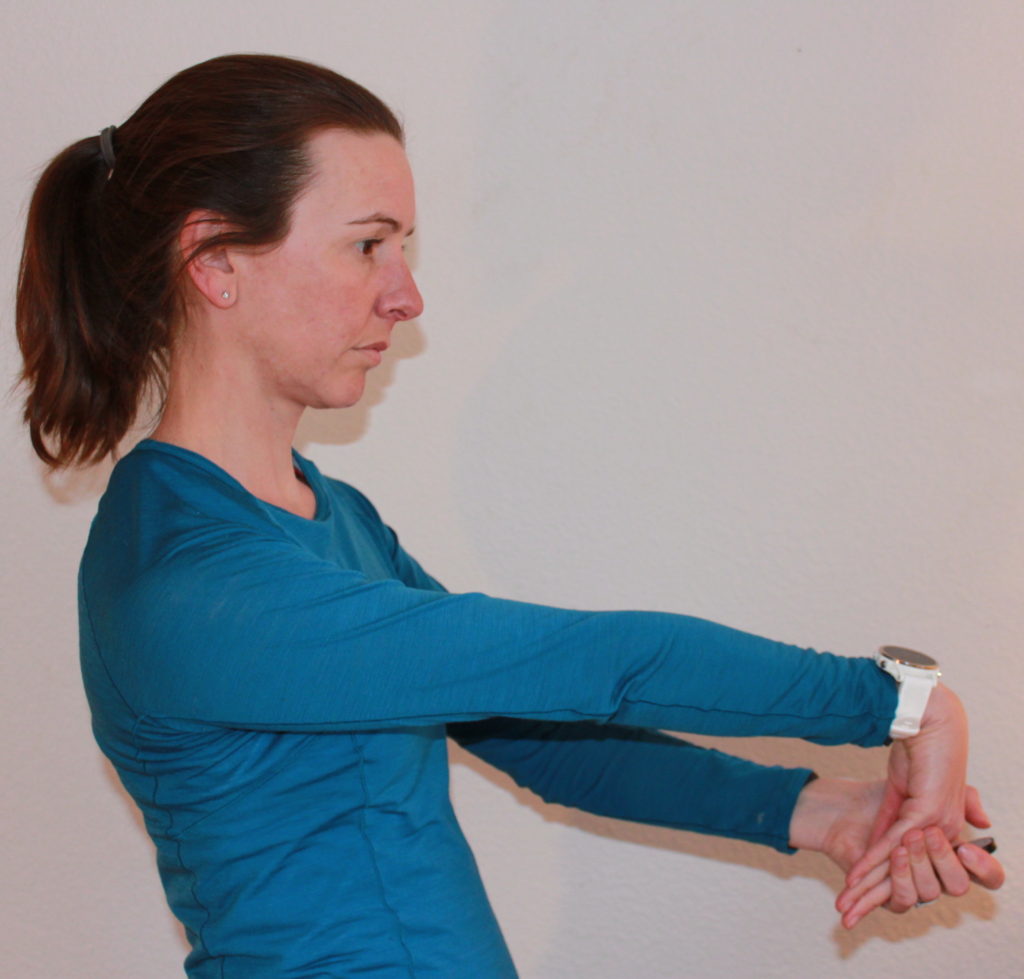
2
2.) Bring your arm in front of you with the palm facing down. Use the opposite hand to pull the hand down to feel a stretch in the forearm or wrist.. Straighten the elbow as you are comfortable.

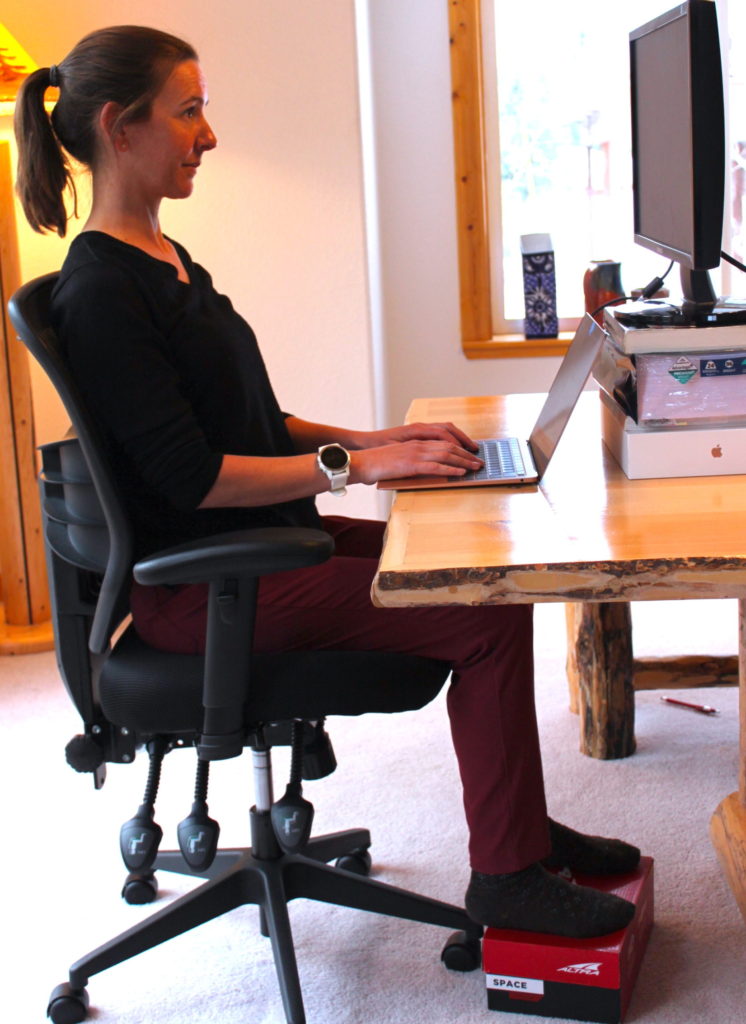
I found your post very helpful specially with the conditions that we are in this last two weeks. I will make modifications to my home work area to make sure I am mist effective and reduce any chance for injury.